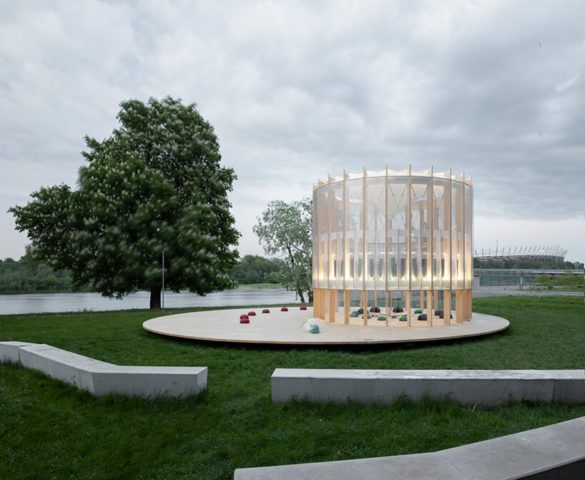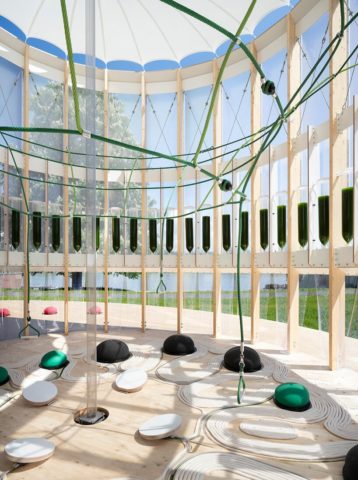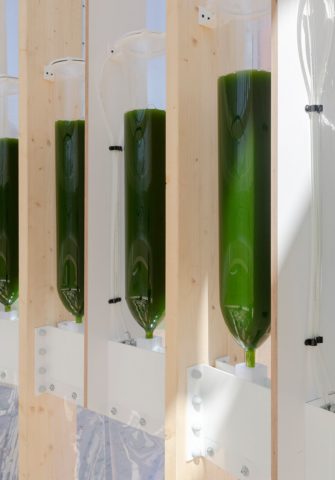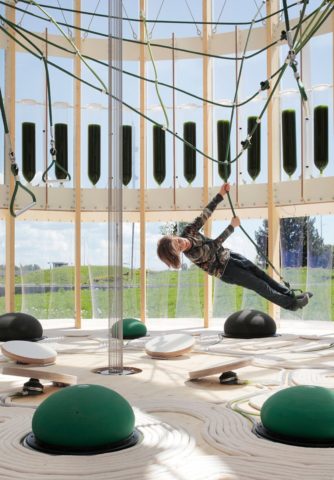Candidates, Why go through a recruitment agency ?
1/ Your chances of finding a job are multiplied If you respond to a job offer published by a recruitment agency, your application will not…
London-based architecture and innovation firm eco Logic Studio describes Airbubble as the world’s first biotechnological playground to integrate air-purifying micro-algae. The project was designed as part of “Otrivin Breathe Clean”, an initiative which estimates that 93% of the world’s children breathe polluted air while they play. Air pollution is the biggest health threat according to the WHO. Airbubble , which provides a purified microclimate,is “a true bubble of clean air in the center of Warsaw”, explain the architects.


The play area consists of a cylindrical timber structure wrapped in an ETFE membrane, a photosynthetic curtain system. It houses 52 large borosilicate glass bioreactors that contain 520 liters of living green chlorella algae culture capable of filtering a polluted air flow of 200 liters per minute. While the liquid medium washes away the particles, the algae actively eat the polluting molecules as well as carbon dioxide to release fresh, clean oxygen. The sound of the bubbles masks the surrounding urban noise to provide a relaxing atmosphere in which to play and interact. The space hosts ropes, foot pumps, and bouncy spheres, and can also function as outdoor classroom.


The Airbubble filtering process is enhanced by the architectural form of the structure: the ETFE membrane serves to control the microclimate inside. The inverted conical roof further stimulates the air recirculation and natural ventilation. Urban air is controlled by air pollution sensors connected to a data processing platform, which compares the figures collected in real time for the six core pollutants and fine particles (nitrogen dioxide, sulfur dioxide, carbon monoxide, etc.). Airbubbleis capable of absorbing 97% of the nitrogen and 75% of the fine particles.

According to the first data collected, the pollution rate within the Airbubble is reduced by 83%. This figure has been calculated by comparing data from a pollution sensor located outside with data from a monitoring device placed inside. The monitoring phase of this rate will continue throughout the summer and into the autumn 2021, under different climatic conditions and patterns of use.

Photo credits: Maja Wirkus
Architects: ecoLogicStudio